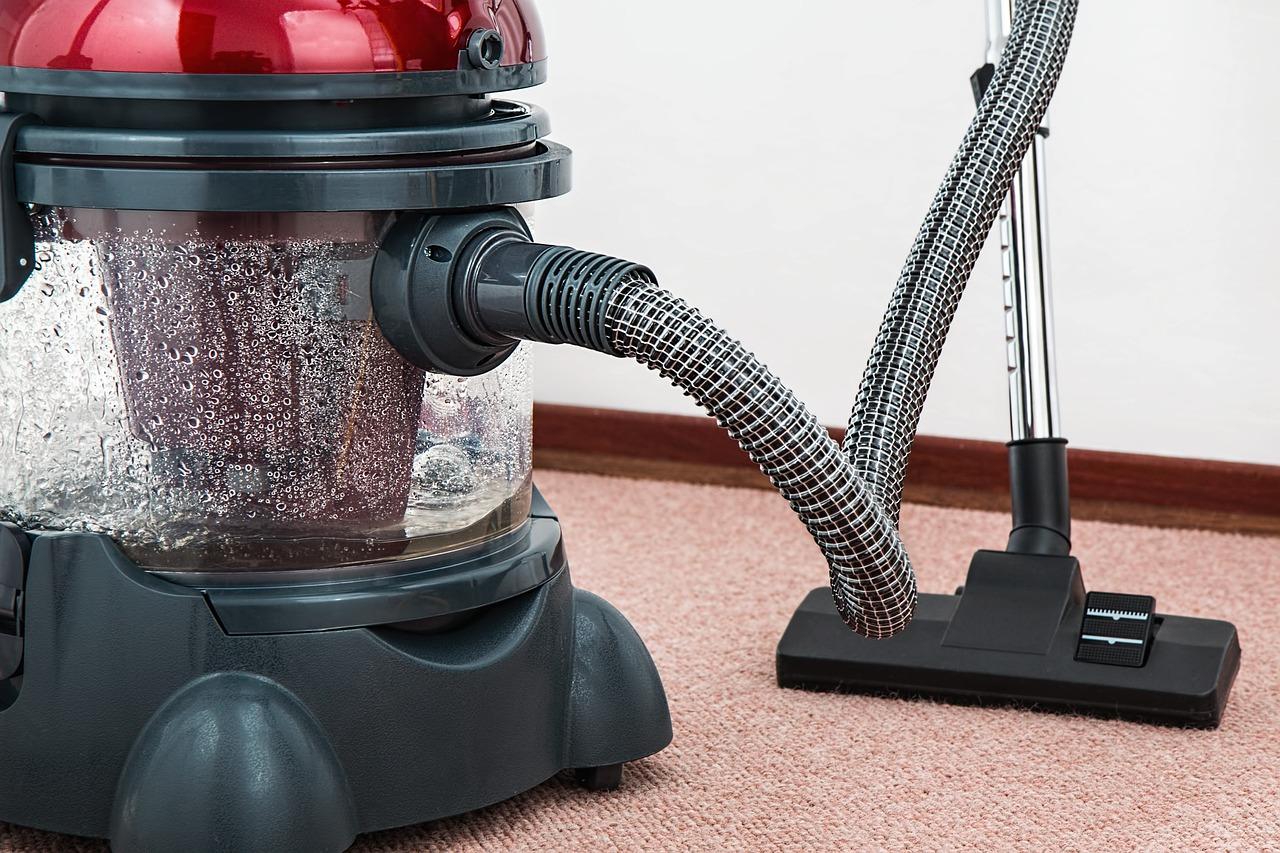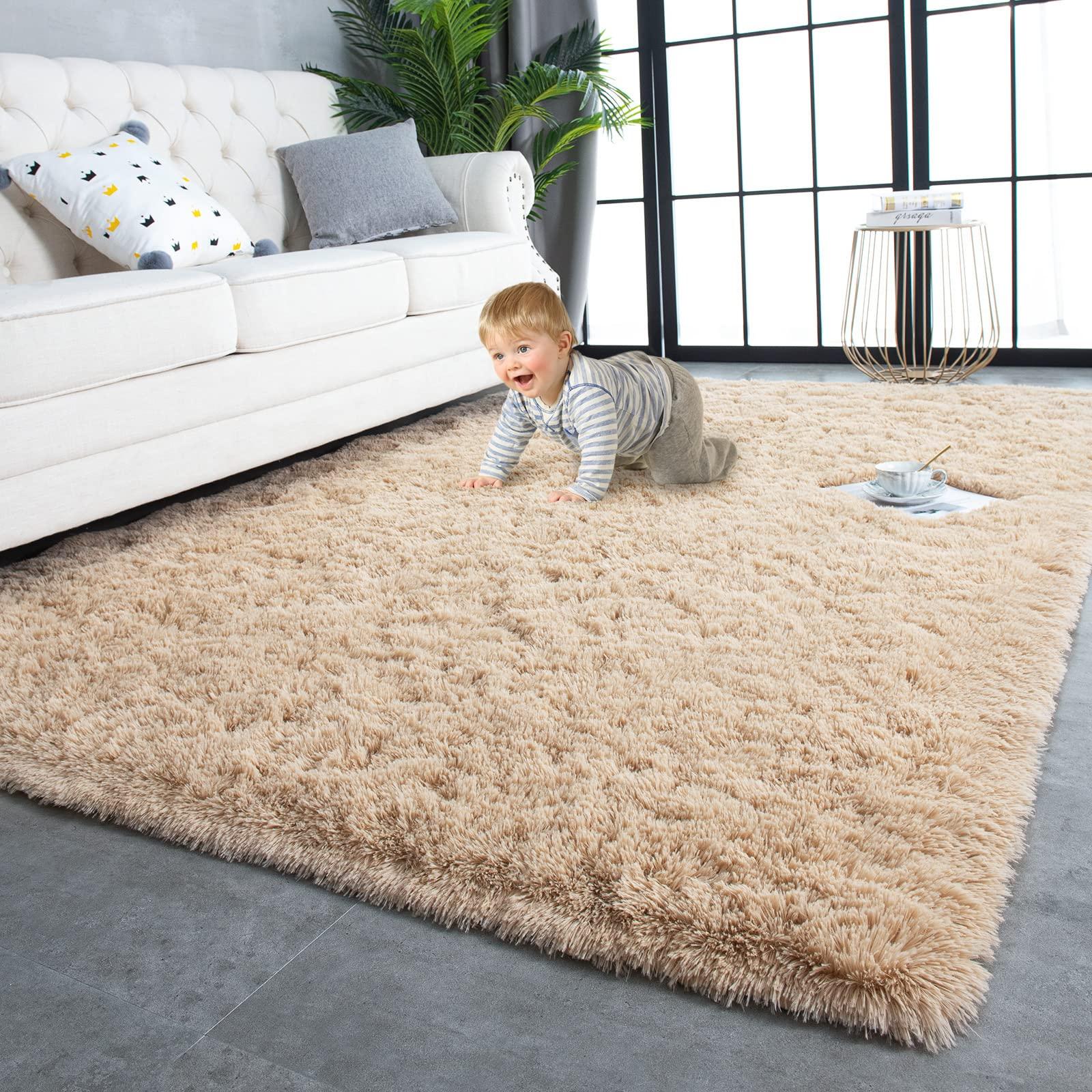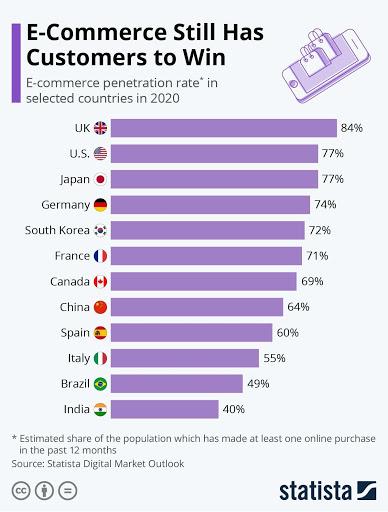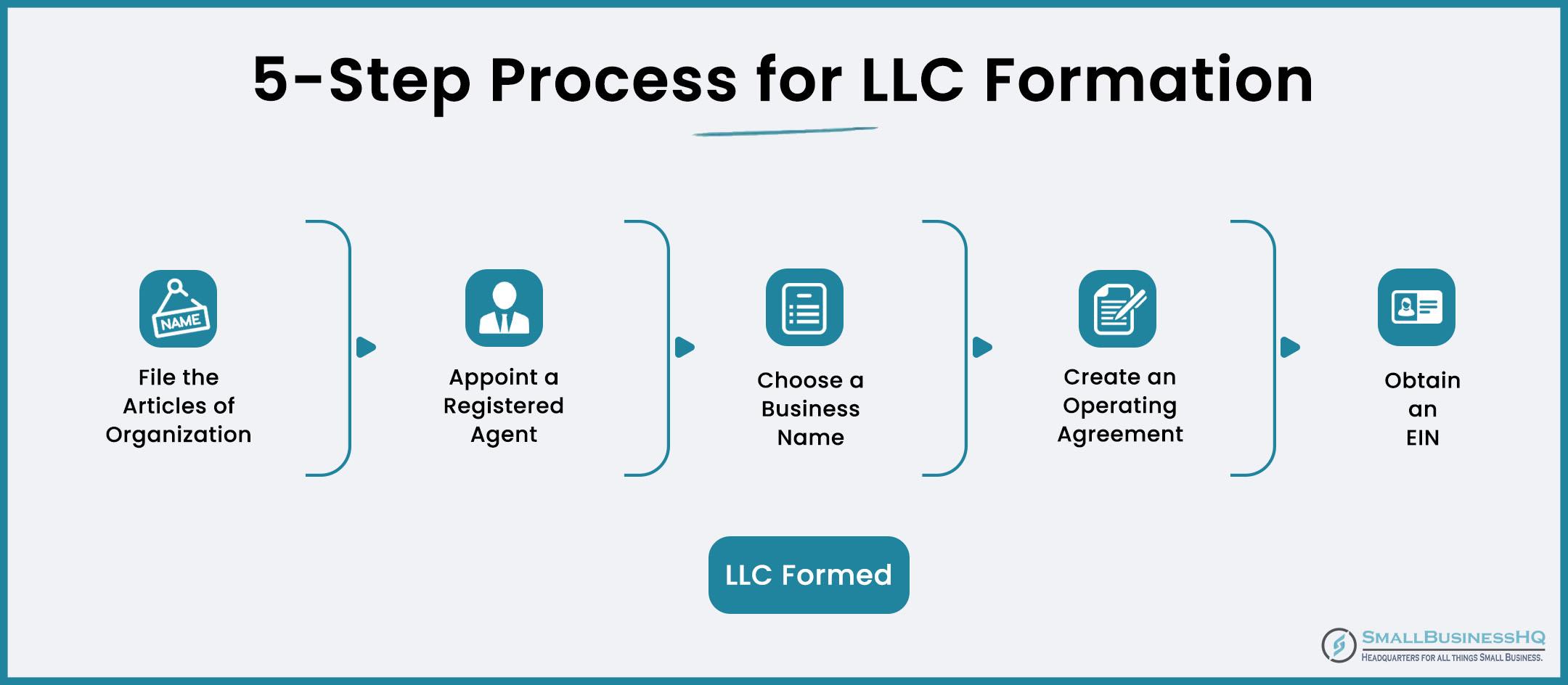
Are you ready to turn your passion for rugs into a thriving online business? Whether you’re a seasoned collector or just starting to explore the vibrant world of textiles, selling rugs online can be both rewarding and profitable. With the right approach, you can transform those beautiful pieces into a steady stream of income. In this step-by-step guide, we’ll walk you through everything you need to know to kickstart your online rug-selling journey. From finding the perfect platform to showcasing your unique inventory, we’ll cover the essentials that will help you stand out in the bustling online marketplace. So, grab a cup of coffee, get comfortable, and let’s dive into the exciting world of selling rugs online!
Understanding the Rug Market and Your Audience
To successfully navigate the online rug market, it’s essential to grasp the dynamics that govern it and to truly understand your target audience. The rug industry is not just about selling beautiful pieces; it’s about connecting with customers who are looking for more than just a product. They seek authenticity, quality, and often, a piece that tells a story.
Your first step in understanding your audience is identifying who they are. Consider factors such as:
- Demographics: Age, gender, income level, and location can influence their buying behavior.
- Lifestyle: Are they minimalists, maximalists, or somewhere in between? Understanding their lifestyle will help you curate your offerings.
- Taste Preferences: Some buyers might prefer traditional styles, while others may lean towards modern aesthetics.
Next, delve into the psychographics of your audience. This involves understanding their interests, values, and motivations. Consumers today are more conscious about sustainability, craftsmanship, and the stories behind the products they purchase. A rug made from eco-friendly materials or one that supports local artisans can be a significant selling point.
Analyzing market trends is also crucial. Monitor popular styles, colors, and materials. For example, as bohemian and vintage aesthetics gain traction, consider incorporating products that align with these trends. Stay updated with design blogs, social media trends, and online marketplaces to see what’s hot in the rug world.
Another effective strategy is to engage your audience through social media. Platforms like Instagram and Pinterest are visual-centric and can be powerful tools for showcasing your rugs. Share high-quality images, styling tips, and even behind-the-scenes content that highlights the craftsmanship behind each piece. This not only builds trust but also creates a community around your brand.
consider leveraging customer feedback to refine your offerings. Encourage reviews and testimonials from satisfied customers. You can showcase these on your website and social media to enhance credibility. A simple table showcasing customer ratings can also be effective:
| Rug Style | Customer Rating |
|---|---|
| Bohemian | 4.8/5 |
| Traditional Persian | 4.7/5 |
| Modern Geometric | 4.9/5 |
By understanding your audience’s needs and preferences, you can tailor your rug offerings to match their desires. This not only increases the chances of making a sale but also fosters customer loyalty and repeat business. Remember, the more you know about your audience, the more effectively you can communicate with them and meet their needs.

Choosing the Right Rugs to Sell Online
When it comes to selling rugs online, the selection process is crucial. The right rugs can make your store stand out and attract customers. Start by identifying your target audience. Are they looking for luxury, bohemian, or contemporary designs? Understanding your ideal customer will help you choose styles that resonate with them.
Material Matters: The material of the rugs significantly impacts not only their price but also their appeal. Consider offering a mix of:
- Wool – Warm and durable, perfect for high-end buyers.
- Cotton – Affordable and easy to clean, great for families.
- Sisal or Jute – Eco-friendly options that appeal to environmentally conscious shoppers.
- Polyester – Budget-friendly and available in a myriad of designs.
Design Diversity: Ensure your rug collection features a variety of designs. Think about:
- Patterns – Stripes, floral, geometric, and abstract to cater to different tastes.
- Colors – Include a palette that ranges from neutral tones to vibrant shades.
- Sizes – Offer small accent rugs as well as large area rugs for versatility.
Trends and Timelessness: While trends can drive immediate sales, timeless designs often provide long-term appeal. Keep an eye on current trends through platforms like Pinterest and Instagram, but balance them with classic styles that never go out of fashion. This way, you can cater to both impulse buyers and those looking for lasting investments.
Quality Control: Ensure that all rugs you plan to sell meet quality standards. Invest time in sourcing from reputable manufacturers or suppliers. You might create a simple checklist for quality assurance:
| Quality Checkpoints | Details |
|---|---|
| Durability | Can it withstand heavy foot traffic? |
| Craftsmanship | Is the weaving consistent and neat? |
| Colorfastness | Do colors remain vibrant after washing? |
| Comfort | Does it feel good underfoot? |
Pricing Strategy: Your pricing should reflect the quality and design of the rugs while remaining competitive. Research similar products online to establish a fair price range. Consider offering promotions or bundle deals, especially for first-time buyers, to entice them to make a purchase.
Visual Appeal: Since you’re selling online, visuals are everything. Invest in high-quality photographs that showcase the rugs in various angles and settings. Lifestyle images can help customers envision the rugs in their own homes. Don’t forget to include close-ups to highlight texture and detail.
Setting Up Your Online Storefront for Success
Creating an online storefront is an exciting venture, especially when it comes to selling rugs. The goal is to craft a virtual space that resonates with your audience and showcases your products effectively. Here are some essential elements to consider when setting up your online store.
Choose the Right E-commerce Platform
Your choice of platform can significantly impact your business’s success. Consider the following popular options:
- Shopify: Known for its ease of use and customizable templates, perfect for beginners.
- WooCommerce: A great option if you’re already using WordPress; it offers flexibility and scalability.
- Etsy: Ideal for artisanal and handmade rugs, with a built-in audience of craft lovers.
Design an Engaging User Experience
Your storefront should be visually appealing and easy to navigate. Here’s how to enhance user experience:
- Use high-quality images that capture the texture and colors of your rugs.
- Implement intuitive navigation menus to help customers find what they’re looking for.
- Incorporate a search bar to allow for quick access to specific items.
Craft Compelling Product Descriptions
Don’t underestimate the power of words. Your product descriptions should not only inform but also entice customers. Focus on:
- Highlighting unique features—material, design, and size.
- Writing in a way that evokes emotion and connection to the product.
- Including care instructions and usage ideas to help customers envision the rugs in their homes.
Optimize for Search Engines
To attract organic traffic, ensure your storefront is optimized for search engines. Consider these strategies:
- Use relevant keywords in product titles and descriptions.
- Include alt text for images to improve visibility in image searches.
- Blog about rug care, trends, and decor tips to establish authority and drive traffic.
Set Up Secure Payment Options
Customer trust is paramount. Make sure to provide a variety of secure payment options:
- Credit and debit cards
- PayPal
- Apple Pay and other digital wallets
Implement SSL certification to secure transactions and protect customer information.
Utilize Social Proof
Encourage customers to leave reviews and testimonials, as social proof can greatly influence purchasing decisions. You might consider:
- Displaying star ratings and customer feedback on product pages.
- Creating a community on social media where satisfied customers can showcase their purchases.
Monitor Analytics and Adapt
Once your store is live, regularly check analytics to understand customer behavior and sales patterns. Key metrics to monitor include:
| Metric | Purpose |
|---|---|
| Traffic Sources | Identify where your visitors are coming from. |
| Conversion Rates | Determine the percentage of visitors who make a purchase. |
| Abandonment Rates | Understand how many customers leave the cart before purchasing. |
Use this data to make informed decisions about marketing strategies and product offerings, ensuring your online store continually evolves and thrives.

Creating Eye-Catching Product Listings
When it comes to selling rugs online, the first impression is often the most lasting one. Your product listing is your shop window, and you want to ensure it’s as inviting and informative as possible. Here are some key elements to focus on for creating listings that truly stand out.
High-Quality Images
Images are the heart of any online product listing. Here are some tips for showcasing your rugs effectively:
- Multiple Angles: Include photos from different angles to give potential buyers a comprehensive view.
- Contextual Shots: Show the rug in a styled room setting to help customers visualize it in their own space.
- Close-Ups: Capture the texture and details of the rug to highlight its quality.
Compelling Descriptions
A great image needs the perfect words to accompany it. Your product descriptions should be engaging and informative. Consider including:
- Material Information: Describe what the rug is made from and the benefits of those materials.
- Size and Dimensions: Clearly list the dimensions, as well as the weight if applicable.
- Usage Suggestions: Offer ideas on where the rug would look best, such as in living rooms, bedrooms, or entryways.
SEO Optimization
To ensure your rugs are discoverable, it’s essential to incorporate SEO best practices into your listings. This involves:
- Keyword Research: Identify relevant keywords that potential customers might use when searching for rugs.
- Use of Tags: Utilize tags and categories to make your listings easier to find.
- Image Alt Text: Don’t forget to add descriptive alt text to your images, which can help with search ranking.
Pricing Strategy
Your pricing should reflect the quality of your rugs while remaining competitive. Consider the following:
- Market Research: Check what similar rugs are being sold for and adjust your prices accordingly.
- Promotions: If applicable, offer discounts or bundled deals to entice buyers.
- Transparent Shipping Costs: Clearly state shipping fees upfront to avoid any surprises during checkout.
Customer Reviews
Social proof plays a significant role in online purchasing decisions. Encourage satisfied customers to leave reviews. You can:
- Follow-Up Emails: Send a follow-up email post-purchase asking for feedback.
- Highlight Testimonials: Feature positive reviews prominently on your product pages.
- Incentives: Consider offering a discount on future purchases in exchange for a review.
remember to regularly update your listings. Keep track of seasonal trends and refresh your product descriptions and images accordingly to keep them relevant and appealing. By focusing on these elements, you’ll be well on your way to that convert visitors into buyers.
Mastering Photography for Stunning Rug Displays
When it comes to selling rugs online, the way you present your products can make all the difference. High-quality photography is essential, as it not only showcases the beauty of your rugs but also builds trust with potential buyers. Here are some tips to help you master photography for your rug displays.
Choose the Right Setting: The backdrop of your rug photography can greatly influence the overall look. Opt for a clean and uncluttered space that allows the rug to take center stage. Consider these settings:
- Natural light areas like near a window
- Neutral-colored walls to avoid distractions
- Outdoor spaces for a fresh, vibrant vibe
Lighting is Key: Bad lighting can obscure the details and colors of your rugs. Aim for soft, diffused natural light to enhance textures and patterns. If shooting indoors, use:
- Softbox lights for even illumination
- Reflectors to bounce light onto the rug
- A tripod to reduce camera shake
Focus on Details: Close-up shots can reveal intricate patterns and textures that buyers will appreciate. Use a macro lens if possible, and remember to:
- Highlight the weave and fibers
- Show the rug’s thickness and quality
- Capture any unique features, like fringe or borders
Angles Matter: Experiment with different angles to find the most flattering views of your rugs. Some effective angles include:
- Overhead shots to showcase the entire design
- Side views to display thickness and texture
- Close-ups of specific features or patterns
Editing for Enhancement: Post-processing is not just about filters; it’s about enhancing the image to reflect the true colors of the rug. Use editing software to:
- Adjust brightness and contrast for clarity
- Crop out distractions
- Correct color imbalances to show true hues
| Photography Aspect | Tip |
|---|---|
| Lighting | Use natural light or diffused softbox lighting |
| Background | Keep it neutral and uncluttered |
| Angles | Experiment with various perspectives |
| Editing | Enhance colors and remove distractions |
Ultimately, the goal of your photography is to create an emotional connection with potential buyers. When they see your beautifully presented rugs, they won’t just see a product; they’ll envision how it fits into their own space. So grab your camera, and start capturing those stunning rug displays!

Pricing Your Rugs Competitively and Profitably
When diving into the world of online rug sales, setting the right price is crucial for attracting customers while ensuring your profitability. It’s essential to strike a balance between being competitive in the market and covering your costs adequately. Here are some key strategies to help you price your rugs effectively:
- Research Your Market: Start by browsing online platforms where similar rugs are sold. Take note of the price ranges for different materials, styles, and sizes. Additionally, consider the condition of the rugs—new, vintage, or used—as this will greatly influence pricing.
- Understand Your Costs: Calculate not only the cost of acquiring or creating the rugs but also any additional expenses, such as shipping, storage, and marketing. This will give you a clear idea of your minimum price point.
- Consider the Value Proposition: Think about what makes your rugs unique. Are they handmade, eco-friendly, or sourced from specific regions? Highlighting these qualities can justify a higher price and attract a niche market.
Another effective method to establish competitive pricing is to analyze your competition closely. Create a simple comparison table to visualize how your prices stack up against similar offerings in the market:
| Rug Type | Competitor Price | Your Price | Notes |
|---|---|---|---|
| Handwoven Wool | $300 | $280 | Similar quality, unique design. |
| Vintage Persian | $500 | $450 | Authentic, well-preserved. |
| Modern Geometric | $200 | $190 | Trendy, high demand. |
Once you have a clear understanding of your costs and market landscape, consider implementing a pricing strategy. Some popular approaches include:
- Cost-Plus Pricing: Add a markup percentage to your total costs to ensure profit. For example, if your rug costs you $100 to make, you might add a 50% markup to sell it for $150.
- Psychological Pricing: Set prices that appear more attractive to consumers, like pricing a rug at $199 instead of $200. This can enhance perceived value.
- Promotions and Discounts: Use seasonal sales, bundle offers, or discounts for first-time buyers to entice customers while still maintaining overall profitability.
Lastly, don’t forget to regularly revisit and adjust your pricing strategy based on customer feedback, market trends, and your sales performance. Keeping a flexible approach will allow you to respond to changes and maximize your profitability in the competitive online rug market.
Implementing Effective Marketing Strategies
When it comes to selling rugs online, having a robust marketing strategy is crucial for attracting customers and driving sales. Here are some effective marketing approaches that can help you stand out in the crowded online marketplace.
Utilize Social Media Platforms
Social media is an excellent way to showcase your rugs and connect with potential buyers. Consider the following:
- Instagram: Post high-quality images of your rugs in various settings. Use engaging stories to share customer testimonials and behind-the-scenes content.
- Pinterest: Create pinboards featuring your rugs styled in different rooms. This platform is ideal for reaching home decor enthusiasts.
- Facebook: Set up a business page to engage with your audience through posts, ads, and live sessions where you can showcase your products.
Leverage Email Marketing
Email marketing is a powerful tool to keep your customers informed and engaged. Start by:
- Building a subscription list through your website.
- Sending out newsletters featuring new arrivals, promotions, and styling tips.
- Offering exclusive discounts to subscribers to encourage repeat business.
Content Marketing
Creating valuable content can draw organic traffic to your website. Consider writing blogs that cover:
- Rug care tips and maintenance.
- How to choose the right rug for different spaces.
- Trends in interior design and how rugs can enhance them.
This not only helps establish your authority in the rug niche but also improves your SEO, driving more traffic to your online store.
Optimize for Search Engines
SEO is vital for online visibility. Use these strategies to optimize your listings:
- Keyword Research: Identify keywords that potential customers might use to search for rugs and incorporate them into your product descriptions.
- Meta Descriptions: Write compelling meta descriptions that include keywords and entice users to click through to your site.
- Alt Text: Use descriptive alt text for images to improve accessibility and help search engines understand your content.
Collaboration and Partnerships
Partnering with influencers or interior designers can significantly expand your reach. Look for individuals who align with your brand values and have a strong following. Here’s how to collaborate effectively:
- Offer them free samples of your rugs in exchange for reviews.
- Host joint giveaways to increase brand awareness.
- Create co-branded content that highlights your rugs in their design projects.
| Marketing Strategy | Benefits |
|---|---|
| Social Media Marketing | Engages customers, builds a community. |
| Email Marketing | Direct communication, encourages loyalty. |
| Content Marketing | Attracts traffic, establishes authority. |
| SEO Optimization | Improves visibility, drives organic traffic. |
| Influencer Collaborations | Expands reach, builds credibility. |

Utilizing Social Media to Boost Sales
In today’s digital age, social media platforms are game changers for small businesses, especially for those venturing into online sales. With billions of active users, leveraging social media can significantly amplify your rug sales. Here are some effective strategies to get started:
- Identify Your Target Audience: Understand who your ideal customers are. Are they homeowners, interior designers, or renters? Knowing your audience helps tailor your messaging and visuals.
- Choose the Right Platforms: Not all social media platforms are created equal. Focus on those where your target audience hangs out. Instagram and Pinterest are excellent for visual products like rugs, while Facebook is great for building community.
- Create Engaging Content: High-quality photos and videos showcase your rugs beautifully. Consider posting styling tips, behind-the-scenes looks at rug creation, or customer testimonials. Engaging content encourages shares, which can broaden your reach.
- Utilize Hashtags Wisely: Effective use of hashtags can enhance the discoverability of your posts. Research trending hashtags within your niche and mix them with your unique branded hashtags.
- Host Giveaways or Contests: This is a fun way to increase engagement and grow your follower base. Encourage participants to share your post and tag friends to enter, which boosts your visibility.
Establishing a consistent posting schedule is also important. Regular updates keep your audience engaged and your brand top-of-mind. Use content calendars to plan and organize your posts, ensuring a good mix of promotional and engaging content.
Engagement is key. Respond to comments and messages promptly. Building relationships with your followers fosters loyalty and encourages conversions. Consider using stories or live sessions to interact in real-time, showcasing new arrivals or hosting Q&A sessions.
Don’t shy away from paid promotions. Platforms like Facebook and Instagram offer targeted advertising options that allow you to reach specific demographics. A well-crafted ad campaign can significantly increase traffic to your website and drive sales.
| Platform | Best For | Content Type |
|---|---|---|
| Visual appeal | Images, Stories, Reels | |
| DIY ideas & inspiration | Infographics, Pins | |
| Community building | Posts, Events, Groups | |
| Quick updates | Tweets, Polls |
Lastly, always analyze your results. Use analytics tools to track engagement, clicks, and conversions. Understanding what works and what doesn’t allows you to refine your strategy continually, ensuring you’re maximizing your sales potential through social media.

Ensuring a Smooth Customer Experience
When selling rugs online, is essential for building trust and encouraging repeat purchases. Every touchpoint, from browsing your website to the final checkout, should be seamless and enjoyable.
First and foremost, invest in an intuitive website design. Your online store should be easy to navigate, with clear categories for different types of rugs. Consider organizing your inventory by type, style, or color. This will allow customers to quickly find what they’re looking for without feeling overwhelmed. A clean, visually appealing layout can keep potential buyers engaged longer.
Provide high-quality images and detailed descriptions. Customers want to see exactly what they’re buying, so offer multiple images from different angles, as well as lifestyle shots showing the rugs in real-life settings. Descriptions should include materials, sizes, and care instructions. The more information you provide, the less likely customers will have questions that could lead to cart abandonment.
Enhance the shopping experience with user reviews. Positive feedback can significantly influence potential buyers. Encourage satisfied customers to leave reviews and display them prominently on your product pages. Consider implementing a star rating system that allows shoppers to quickly gauge the quality of a rug. This transparency builds confidence and can lead to higher conversion rates.
| Feature | Benefit |
|---|---|
| Live Chat Support | Immediate assistance for customer inquiries |
| Easy Returns Policy | Reduces purchase anxiety and builds trust |
| Mobile Optimization | Ensures a smooth shopping experience on all devices |
Implement an efficient checkout process. The fewer steps your customers have to take to complete their purchase, the better. Offer multiple payment options, including credit cards, PayPal, and even digital wallets. Additionally, ensure that the checkout flow is straightforward and doesn’t require unnecessary information. A guest checkout option can also enhance the experience for those who don’t want to create an account.
Lastly, prioritize communication post-purchase. Send confirmation emails that reassure customers their order is being processed, and provide tracking information as soon as it’s available. Keeping your customers informed at every stage of the journey helps to foster a sense of connection and satisfaction.
By focusing on these key areas, you can create an enjoyable and hassle-free shopping experience that not only attracts new customers but also encourages loyalty and repeat business.

Handling Shipping and Returns Like a Pro
When it comes to online retail, mastering the logistics of shipping and returns is crucial for success. For rug sellers, this means ensuring a smooth experience from the moment an order is placed to the time the customer receives their new home accent. Here are some essential strategies to handle shipping and returns like a pro:
- Choose the Right Shipping Partner: Collaborate with reliable shipping companies that offer competitive rates and delivery times. Research customer reviews and service levels to find the best match for your business needs.
- Offer Multiple Shipping Options: Giving customers choices—like standard, expedited, and international shipping—can improve satisfaction. Some may prioritize speed, while others lean towards cost-effectiveness.
- Transparent Shipping Costs: Always display shipping fees clearly on your website. If possible, consider offering free shipping on orders over a certain amount to incentivize larger purchases.
- Provide Detailed Shipping Information: Customers appreciate knowing exactly when to expect their rugs. Implement tracking features and notify customers when their orders ship, including estimated delivery dates.
Returns are an inevitable part of any online business, but with the right approach, they can enhance customer loyalty rather than detract from it:
- Clear Return Policy: Draft a straightforward and easy-to-understand return policy. Include details like the timeframe for returns, acceptable conditions for items, and how customers can initiate a return.
- Simple Return Process: Make returns hassle-free by providing prepaid return labels or easy instructions for shipping back the items. The simpler the process, the more likely customers will feel satisfied.
- Encourage Feedback: After a return, ask customers for feedback on why they chose to return the rug. This information can help you improve product descriptions, sizing charts, and overall quality.
Here’s a quick overview of common shipping and return practices:
| Shipping Method | Delivery Time | Cost |
|---|---|---|
| Standard Shipping | 5-7 business days | Varies by location |
| Expedited Shipping | 2-3 business days | Higher fee applies |
| International Shipping | 7-21 business days | Based on destination |
By implementing these practices, you can ensure that your customers have a positive experience from shopping to receiving their rugs. Remember, a well-executed shipping and return policy not only enhances customer satisfaction but can also lead to repeat business and referrals, ultimately contributing to your success in the online rug market.

Building Trust with Customer Reviews and Feedback
In the world of online retail, customer reviews and feedback serve as your most powerful assets. They build trust with potential buyers and can make or break a sale. When a customer lands on your rug-selling website, they’re not just looking at a product; they’re seeking reassurance that their choice is a good one. This is where authentic reviews come into play.
Highlight User Experiences
When you showcase real feedback from happy customers, it creates a sense of community and trust. Consider featuring a dedicated section for testimonials on your website. This can include:
- Customer quotes about their purchase experience
- Photos of customers with their new rugs
- Ratings and reviews prominently displayed
Encourage Reviews
Don’t wait for customers to leave reviews on their own. Proactively ask for feedback after a purchase. A simple email follow-up can work wonders. In your email, make it easy for customers to leave a review by including links to the review page. You might want to include incentives like discounts on future purchases as a thank-you for their time.
Showcase Reviews Strategically
Placement matters! Make sure your best reviews are easy to find. Here are some effective strategies:
- Feature top-rated reviews on your homepage
- Incorporate reviews on individual product pages
- Create a “Customer Favorites” section based on positive feedback
Utilize Visuals
Words can be powerful, but visuals can be even more compelling. Consider creating a gallery of customer photos showcasing your rugs in their homes. This not only provides social proof but also inspires potential buyers by showing how the rugs can fit into different styles and spaces.
Respond to Feedback
Engagement doesn’t stop at collecting reviews. Responding to feedback, both positive and negative, shows that you value your customers’ opinions. For positive reviews, express your gratitude. For negative ones, address the concerns professionally. This level of engagement can turn a dissatisfied customer into a loyal advocate.
Monitor and Adapt
Keep an eye on the trends in customer feedback. If multiple customers mention the same issue, it’s a red flag that something needs to change, whether it’s product quality, shipping times, or customer service. By adapting to feedback, you demonstrate that you’re committed to providing the best experience possible.
Building a trustful relationship with customers isn’t just about selling rugs; it’s about creating a community of satisfied buyers who feel valued and heard. Incorporating customer reviews and feedback into your online store isn’t just a good practice—it’s essential for long-term success.

Scaling Your Rug Business for Long-Term Growth
Strategies for Sustainable Growth
To achieve long-term success in the rug business, it’s essential to adopt a strategy that fosters scalability. Focusing on key areas can help you streamline operations, enhance customer satisfaction, and ultimately expand your market reach. Here are some crucial strategies to consider:
- Diversify Your Product Range: Offering a variety of styles, materials, and price points can attract a broader customer base. Consider adding eco-friendly options or custom designs to cater to different tastes.
- Optimize Your Online Presence: A user-friendly website with intuitive navigation and high-quality images can significantly enhance the shopping experience. Investing in SEO will help drive organic traffic to your site.
- Leverage Social Media: Platforms like Instagram and Pinterest are visual-centric and perfect for showcasing your rugs. Regularly post engaging content and interact with your followers to build a loyal community.
- Implement a Customer Loyalty Program: Rewarding repeat customers can enhance retention rates and encourage referrals. Consider discounts, exclusive access to new collections, or special promotions for loyal patrons.
Streamlining Operations
As your business grows, so does the complexity of your operations. Streamlining processes can save time and reduce costs. Here are a few ways to make your operations more efficient:
- Automate Inventory Management: Use software that automatically tracks stock levels, alerts you for restocking, and integrates with your sales platforms. This minimizes the risk of overselling and helps maintain customer satisfaction.
- Outsource Logistics: Partnering with a reliable fulfillment center can help you manage shipping and returns more effectively. This allows you to focus on marketing and product development.
- Utilize Data Analytics: Analyzing customer behavior and sales trends can guide your decision-making. Use this data to refine your marketing strategies and inventory choices.
Building Stronger Customer Relationships
Customer relationships are the backbone of any successful business. Engaging with your customers can lead to valuable insights and foster brand loyalty. Consider these approaches:
- Personalized Communication: Send personalized emails or messages that cater to individual customer preferences and past purchases. This small touch can significantly enhance customer experience.
- Gather Feedback: Regularly solicit feedback through surveys or reviews. Understanding customer needs will help you tailor your offerings and improve service.
- Host Virtual Events: Organize webinars or live Q&A sessions to connect with your audience. Sharing your knowledge about rugs can position you as an authority in your niche.
Table: Key Metrics to Monitor for Growth
| Metric | Description | Importance |
|---|---|---|
| Customer Acquisition Cost (CAC) | Cost to acquire each new customer | Helps evaluate marketing effectiveness |
| Average Order Value (AOV) | Average amount spent per order | Indicates customer spending habits |
| Customer Lifetime Value (CLV) | Total revenue expected from a customer | Essential for long-term planning |
| Return Rate | Percentage of items returned | Affects profitability and inventory management |
By focusing on these areas, you can effectively scale your rug business while ensuring that you meet the evolving demands of your customers. This holistic approach not only leads to growth but also builds a sustainable foundation for your brand’s future.

Staying Updated on Trends and Customer Preferences
In the ever-evolving landscape of online retail, staying ahead of the curve is crucial for success. As a rug seller, understanding the latest trends and customer preferences can significantly enhance your ability to connect with your audience and boost sales. To do this effectively, consider implementing a few key strategies.
Follow Design Trends: Rugs can be influenced by various design movements, seasons, and even cultural shifts. Here’s how to keep your offerings fresh:
- Subscribe to interior design magazines and blogs to spot emerging styles.
- Follow influential designers on social media platforms like Instagram and Pinterest.
- Attend trade shows or virtual expos dedicated to home decor.
Analyze Customer Feedback: Your customers are your best source of insights. Pay attention to:
- Reviews and ratings on your website and social media pages.
- Comments and questions from customers about specific styles or materials.
- Surveys or polls about preferences and design aesthetics.
Consider utilizing a feedback loop where you regularly analyze customer data. This could involve:
| Data Type | Action |
|---|---|
| Sales Data | Identify best-selling styles to inform future collections. |
| Social Media Engagement | Adjust marketing strategies based on what resonates with your audience. |
| Website Analytics | Track visitor behavior to optimize product placement and navigation. |
Engage with the Community: Building a loyal customer base is about connection. Here are some ways to engage:
- Create a blog or vlog where you discuss trends, styling tips, and the history of rugs.
- Host online events or webinars about rug care or home styling.
- Encourage user-generated content by inviting customers to share photos of their rugs in their homes.
Utilize Social Listening Tools: The power of social media goes beyond mere engagement. Use social listening tools to:
- Monitor mentions of your brand and competitors.
- Track keywords related to rugs and home decor.
- Identify trending topics within home design communities.
By weaving these strategies into your approach, you’ll not only stay updated but also foster a deeper connection with your audience. Remember, a well-informed seller is often a successful seller, and being attuned to trends and preferences sets the foundation for a thriving online rug business.

Navigating Legal Considerations for Online Selling
When venturing into online selling, particularly in niche markets like rugs, understanding the legal landscape is crucial. Compliance with laws and regulations ensures not only the longevity of your business but also builds trust with your customers. Here are some key legal considerations to keep in mind:
- Business Structure: Decide on the appropriate business structure, such as a sole proprietorship, LLC, or corporation. Each has different implications for liability and taxes.
- Licenses and Permits: Check if you need a business license or specific permits to sell rugs in your location. This can vary widely by jurisdiction.
- Sales Tax: Understand the sales tax requirements in your state and any other states where you sell. Some states require sales tax to be collected for online sales, and not doing so can lead to penalties.
Next, it’s essential to address consumer protection laws. These laws are designed to protect buyers and can affect how you market and sell your rugs:
- Return Policies: Clearly outline your return policy on your website. Make sure it complies with consumer rights laws, which often require that customers can return items within a certain timeframe.
- Product Descriptions: Ensure your product descriptions are accurate to avoid misleading customers, which can lead to legal issues.
- Privacy Policies: If you’re collecting personal information from customers, a privacy policy is essential. It informs users how their data will be used and protected.
Additionally, consider the intellectual property aspects of your online selling venture. Protecting your brand and products is vital:
- Trademark Registration: If you have a unique brand name or logo, consider registering it as a trademark to prevent others from using it.
- Copyrights: Original designs should be protected by copyright to stop others from copying your creative work.
Lastly, don’t overlook the importance of online platform policies. If you’re selling on platforms like Etsy or eBay, familiarize yourself with their rules, as they can have their own legal requirements that must be followed.
Here’s a simple table summarizing the key legal aspects to consider:
| Legal Aspect | Considerations |
|---|---|
| Business Structure | Choose between sole proprietorship, LLC, or corporation. |
| Licenses | Research local regulations for selling. |
| Sales Tax | Understand your obligations in various states. |
| Return Policy | Make it clear and compliant with laws. |
| Trademark | Protect your brand identity legally. |
By addressing these legal considerations proactively, you can set a solid foundation for your online rug-selling business, ensuring compliance and protecting your interests as you grow your venture.
Frequently Asked Questions (FAQ)
Q&A: How to Sell Rugs Online: A Step-by-Step Guide (for Beginners)
Q1: Why should I consider selling rugs online?
A1: Selling rugs online can be a fantastic opportunity! With the rise of e-commerce, you can reach a global audience without the overhead costs of a physical store. Rugs are popular home decor items, and many people are looking for unique pieces to enhance their spaces. Plus, once you set up your online store, it can be a low-maintenance way to earn extra income!
Q2: What’s the first step I need to take to start selling rugs online?
A2: The first step is to decide on your niche. Are you focusing on vintage rugs, handmade designs, or modern styles? Understanding your target market will help you tailor your offerings and marketing strategies. Once you have your niche, you can move on to sourcing your rugs!
Q3: How do I source rugs for my online store?
A3: There are several ways to source rugs! You can check out local artisans, attend trade shows, or even buy in bulk from wholesalers. If you have an eye for unique finds, thrift stores and flea markets can also be treasure troves. Just make sure the rugs are in good condition and align with your chosen niche!
Q4: What platform should I use to sell my rugs?
A4: There are plenty of platforms to choose from! Websites like Etsy and Shopify are great for handmade or vintage items, while Amazon can help you reach a broader audience. If you want to keep it simple, social media platforms like Instagram and Facebook Marketplace can also be effective. Choose one that fits your style and target audience!
Q5: How can I showcase my rugs to attract buyers?
A5: Great question! High-quality photos are essential. Make sure to capture your rugs in natural light and style them in an appealing way—think cozy living rooms or chic bedrooms! Also, write engaging descriptions that highlight the unique features and craftsmanship of each rug. This storytelling can really draw in potential buyers!
Q6: What should I consider when pricing my rugs?
A6: Pricing can be tricky but think about the cost of sourcing, shipping, and any platform fees. Research similar rugs online to see how they’re priced. Remember, you want to strike a balance: charge enough to cover your costs and make a profit, but be competitive enough to attract buyers. Don’t undervalue your products!
Q7: How can I effectively market my rugs online?
A7: Marketing is key! Use social media to showcase your rugs, share customer testimonials, and create engaging content. Consider running ads on platforms like Facebook or Instagram to reach a larger audience. Email marketing can also be effective—send out newsletters featuring new arrivals and promotions. The more people see your rugs, the more likely they are to buy!
Q8: What is the best way to handle shipping?
A8: Shipping can be daunting but don’t worry! Research different shipping options to find the most cost-effective and reliable service. Invest in quality packaging to ensure your rugs arrive safely. Also, consider offering free shipping as an incentive—just factor that into your pricing strategy!
Q9: What if I struggle to make sales?
A9: It’s normal to face challenges at first! If sales are slow, revisit your marketing strategy, analyze your pricing, and seek feedback on your product presentation. Engaging with your audience on social media or through blog posts can also help build a loyal customer base. Remember, persistence is key—keep refining your approach!
Q10: Any final tips for beginners?
A10: Absolutely! Stay passionate about what you’re selling, and remember that building an online business takes time. Don’t be afraid to learn from your mistakes and adapt as you go. Network with other sellers and join online communities for support. And most importantly, have fun—your enthusiasm will resonate with potential buyers!
Now that you have a roadmap, why not dive in and start your rug-selling journey today? You’ve got this!
Closing Remarks
And there you have it—your comprehensive roadmap to selling rugs online! By following these steps, you’re not just setting up a store; you’re crafting an experience that draws customers in and keeps them coming back for more. Remember, every successful online business started as a dream, just like yours.
Take the plunge! Embrace the learning curve, and don’t shy away from experimenting with different strategies. With the right approach and a sprinkle of creativity, you can turn your passion for rugs into a thriving online business.
So, what are you waiting for? Dust off that dream of yours, gather your rugs, and let the world see what you’ve got to offer. You’re not just selling rugs; you’re sharing stories and styles that can transform spaces. Start today, and who knows? Your rug-selling journey might just lead you to unexpected heights. Happy selling!






